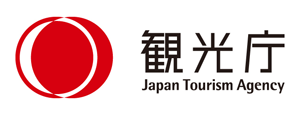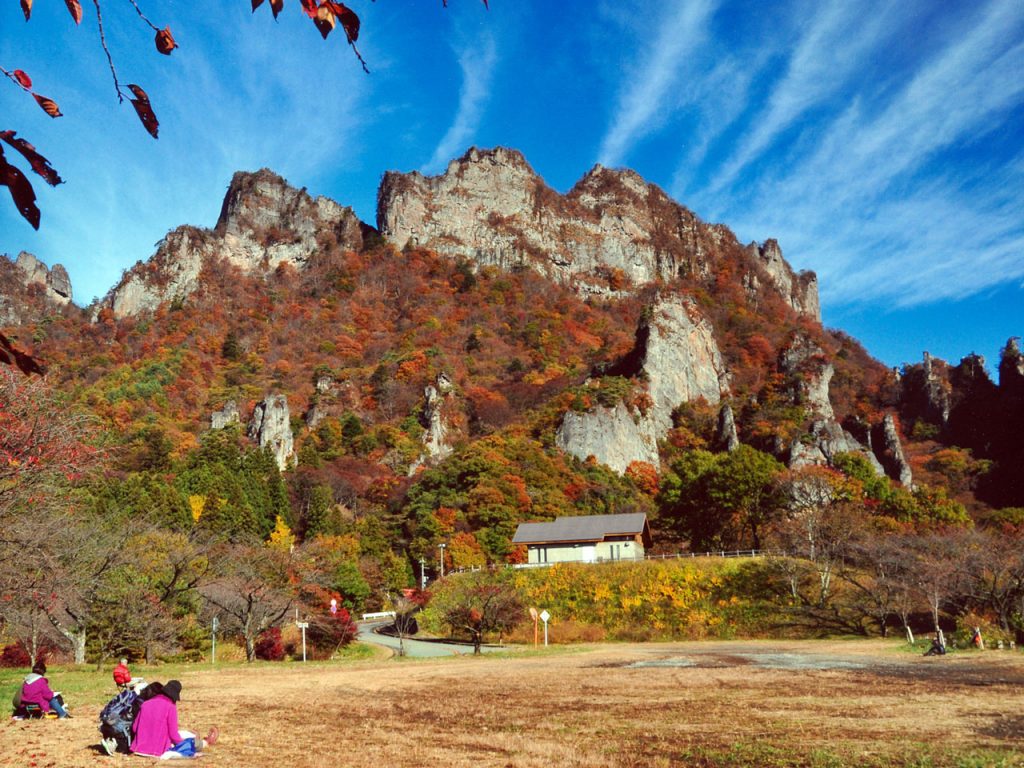
Mt. Myogi is a conglomeration of peaks, the remains of a volcano believed to have last erupted more than five million years ago. The highest peak is Somadake (1,104 m). Mt. Myogi is famous for its unusual rock formations, the result of millions of years of erosion by the elements on the dense andesite of the ancient volcanic crater.
This unusual scenery has earned Mt. Myogi a place as one of Japan’s top three rugged beauty spots. In the fall, Mt. Myogi changes color with autumn foliage, and in late spring, multiple varieties of cherry trees bloom across its craggy landscape.
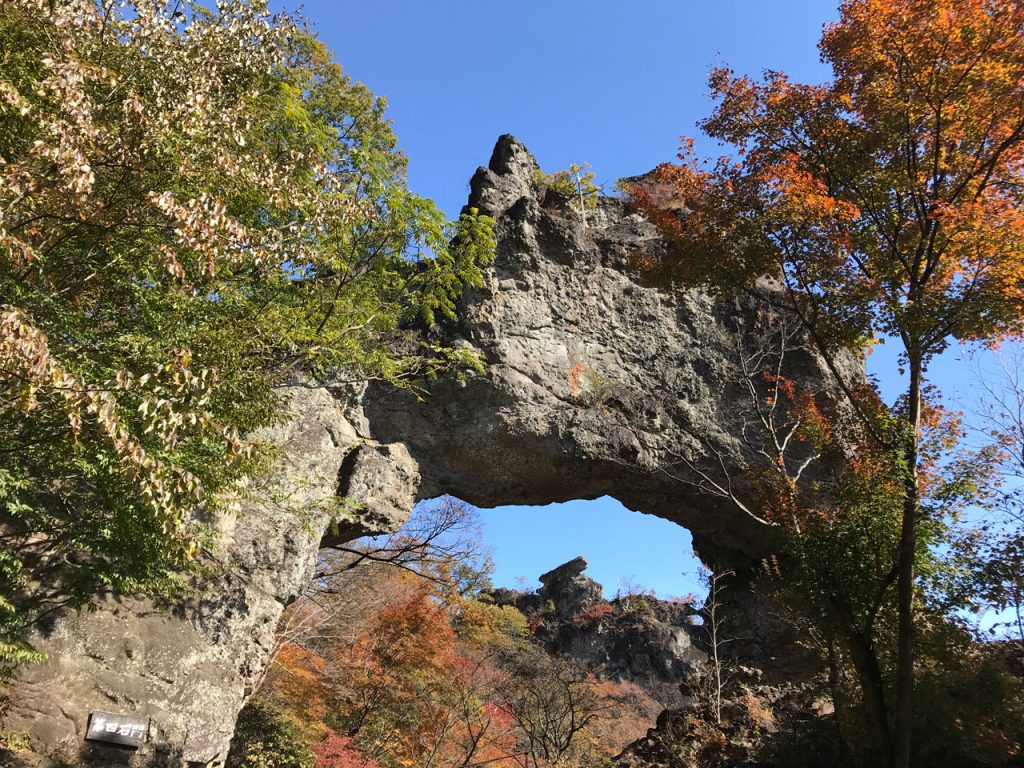
Hikers especially enjoy exploring the mountain. They are rewarded by views extending across the Kanto plain and a close-up look of the unique rock formations, as well as the thrill of clambering over some of those formations on certain hikes. There are multiple trails, each graded by level of difficulty. From time to time certain hiking courses are closed if conditions are slippery.
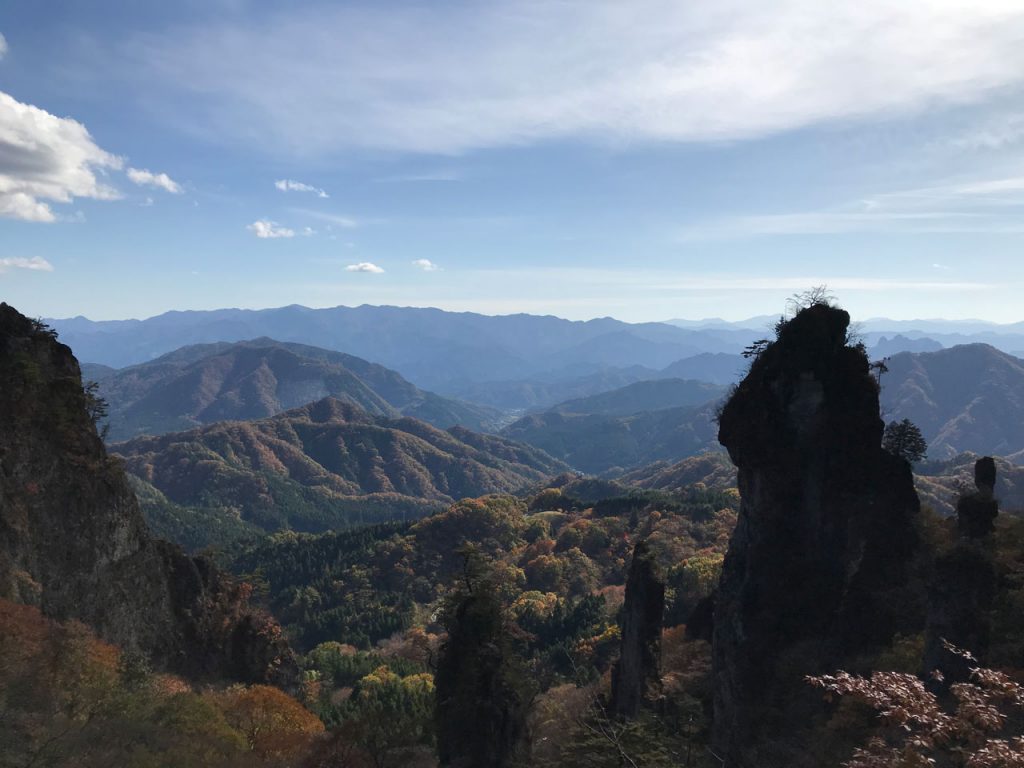
Archaeological evidence indicates that ancient peoples regarded the area around Mt. Myogi as a sacred abode of the gods. Todoroki-iwa is a rock needle that has been a sacred place since ancient times. It towers above Nakanotake-jinja Shinto shrine, an ornate complex of shrines nestled in a forest of cryptomeria. Prehistoric artifacts from the Jomon period (10,000 BCE–300 BCE), including six-sided stone tools, have been found in the area around the mountain. Stone implements shaped like Todoroki-iwa have been found at ancient ruins around Mt. Myogi where it is thought rituals were performed.
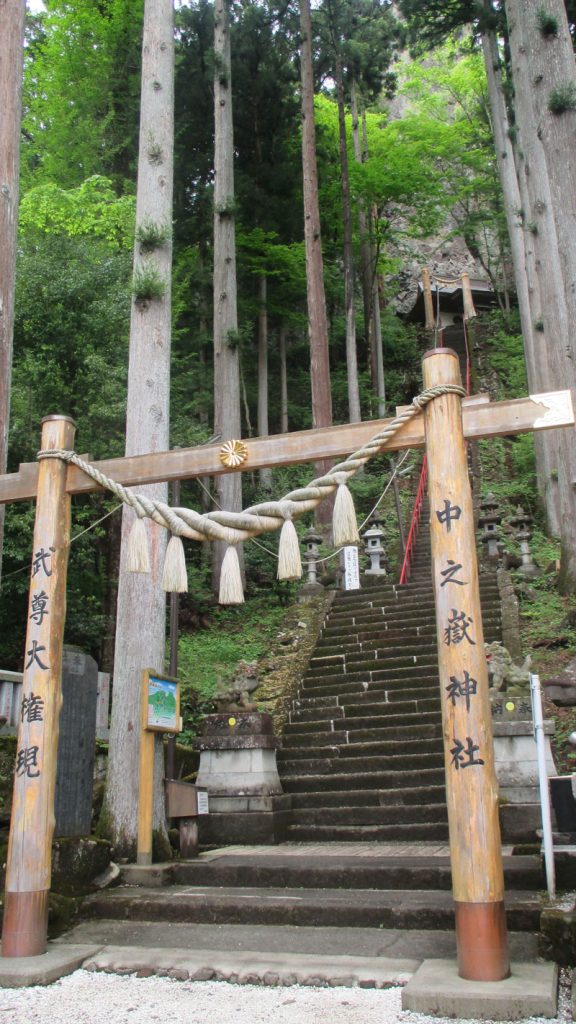
Nakanotake Shrine was founded in 819 and was once home to a temple established on the same site by Kukai (774–835; known posthumously as Kobo Daishi), a Buddhist priest who is largely credited with spreading Buddhism in Japan. Today, only the shrine remains.
In 2005, the shrine added a golden statue of Daikokuten, the god of prosperity. At 20 meters tall, it is the largest statue of Daikokuten in Japan. The addition has made the shrine more popular with people engaged in commercial enterprises, who come to offer prayers for their success. Daikokuten is depicted standing atop two bales of rice, a sign of prosperity, and holds a sword in his right hand, rather than the mallet, as is the case for many Daikokuten statues. The sword is believed to give him the power to ward off evil while bestowing economic success.
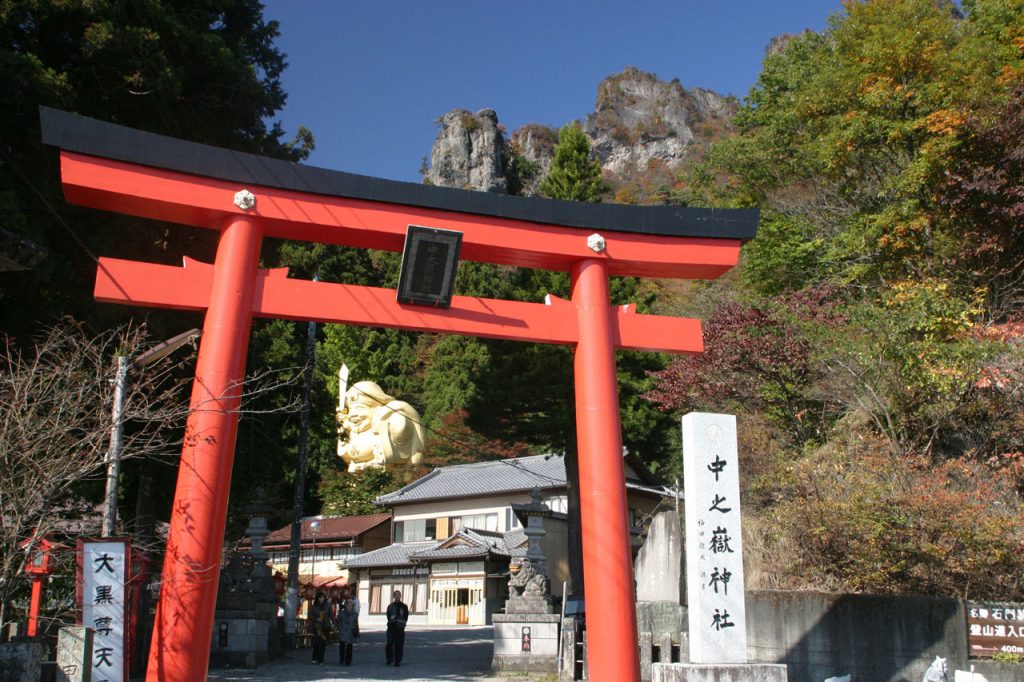
To the east of Mt. Myogi is Myogi-jinja Shinto shrine, another ancient religious site. Myogi Shrine is popular among those praying for scholastic success or luck in love, as well as general good fortune and business success. When silkworms were commonly raised in this area (up to the mid-twentieth century), farmers would pray here for their silkworms as well. The shrine is accessed via steep stone stairs and is a fine example of eighteenth-century shrine architecture.
